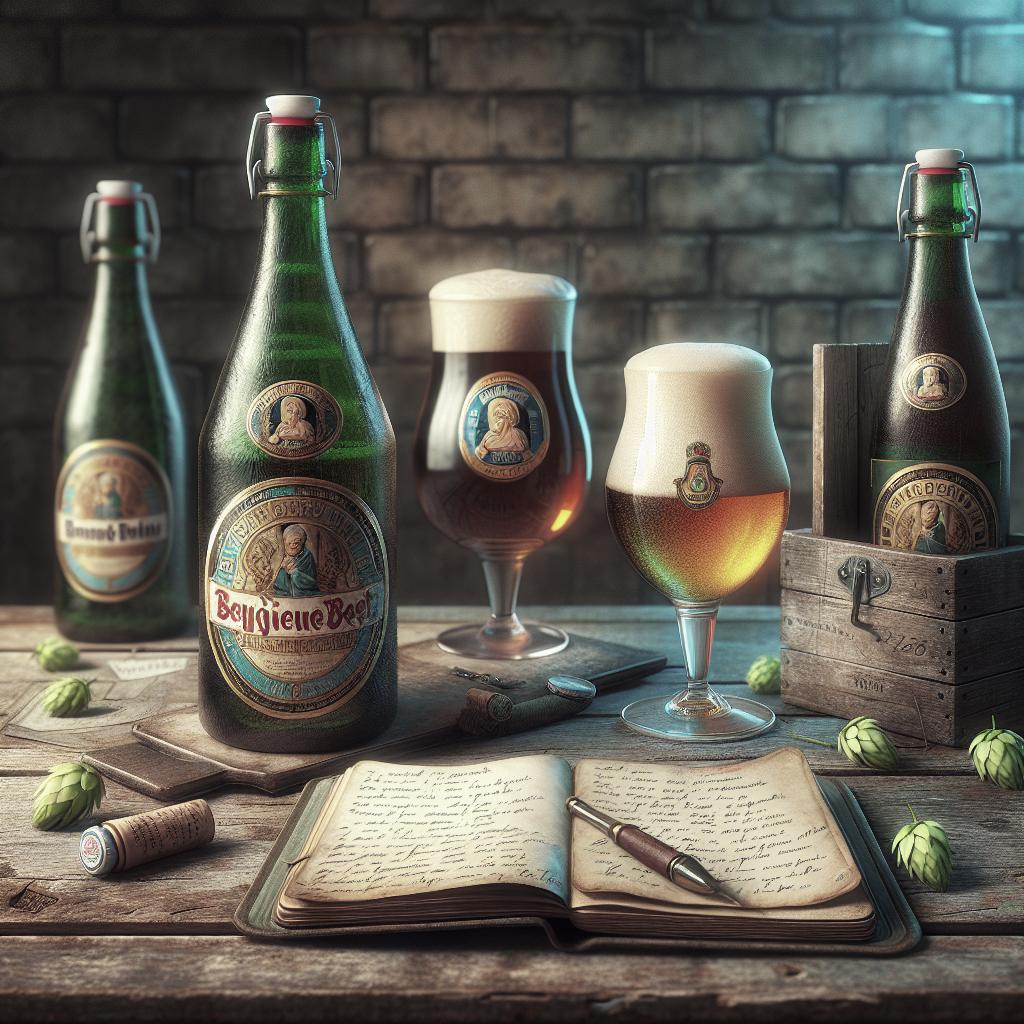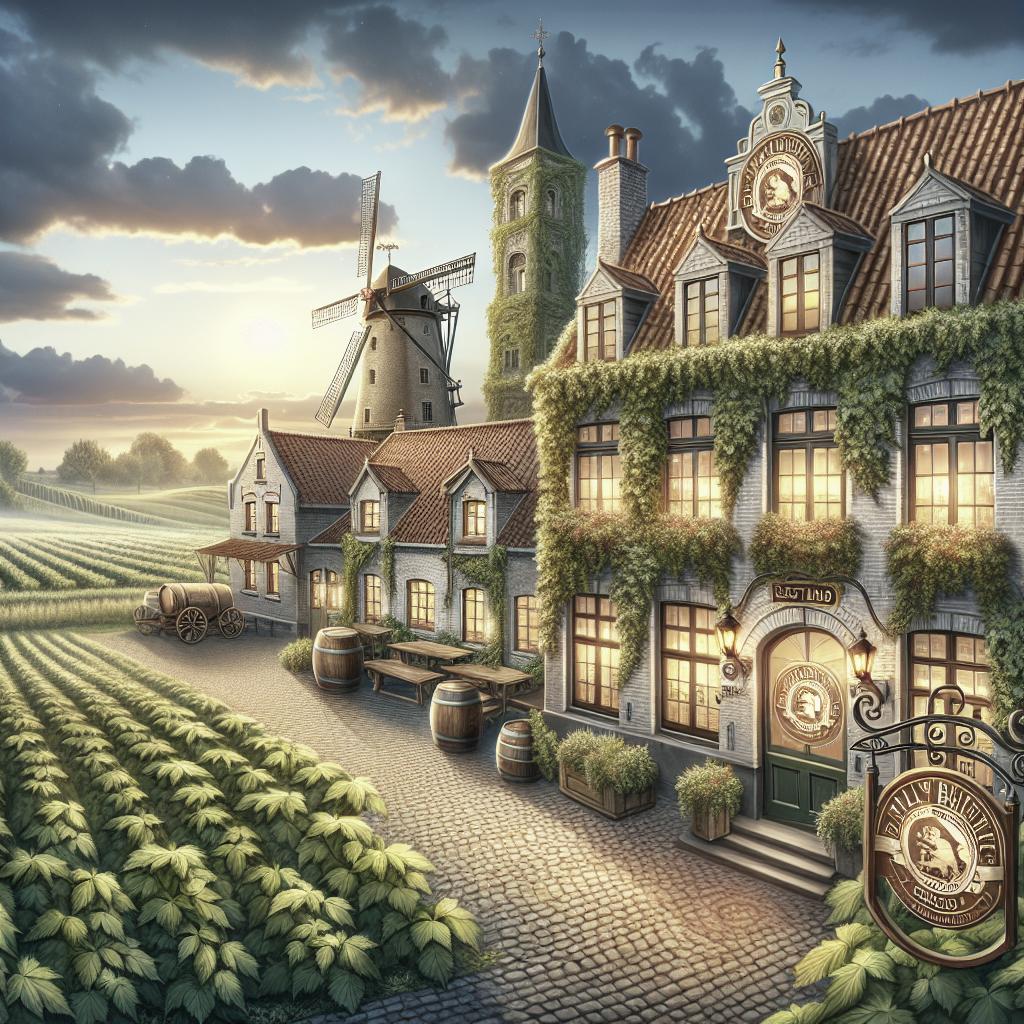“`html
Comparing Vintage and New Belgian Beers
Belgium is a country synonymous with beer, brimming with centuries-old brewing techniques and a profound beer culture. From sophisticated Abbey ales to refreshing Witbiers, Belgian beers cover a vast spectrum of flavors, textures, and brewing philosophies. The contrast between vintage Belgian beers and newer releases offers an intriguing exploration into both the heritage and the evolving innovation within the beer world. In this comprehensive guide, we delve into various Belgian beer styles, examining what sets the traditional apart from the contemporary. By uncovering the nuances of Abbey ales, farmhouse brews, Pale ales, and famous Lambics, we aim to provide you with the insights needed to appreciate the rich tapestry of Belgian brewing, whether you’re a seasoned enthusiast or a curious newcomer.
Abbey Ales
Abbey Ales are a testament to Belgium’s rich monastic brewing tradition. Historically brewed within abbeys and monasteries, these ales have a unique depth that comes partly from the spiritual dedication to the practice. Vintage Abbey Ales often carry a signature richness with bold malt profiles and complex layers developed through extended aging. Many connoisseurs appreciate their historical and artisanal quality, often seeking out labels that indicate authentic Trappist heritage.
In contrast, new releases of Abbey Ales can diversify in terms of flavor and experimentation. Modern breweries may add unique ingredients, experimenting with hops and yeasts to create fresh twists on traditional recipes. The accessibility of innovative brewing technology and a growing emphasis on sustainability are shaping the new wave of Abbey Ales. These elements offer beer enthusiasts a chance to experience traditional flavors reimagined through a contemporary lens.
Dubbel, Quadrupel, and Belgian Strong Dark Ale
The Dubbel, Quadrupel, and Belgian Strong Dark Ales carry forward the ancient Belgian brewing tradition with beers that are robust, often high in alcohol content, and deep in flavor. Vintage versions of these ales are celebrated for their intricate layering of flavors, including dark fruits, toffee, and a slight spiciness, which becomes more pronounced with aging. They are considered a testament to brewers’ ability to craft sophisticated, multidimensional ales that age gracefully.
Recent incarnations, however, showcase a bold approach to custom flavors and brewing techniques. There’s a trend towards experimenting with barrel aging, where these ales are matured in whiskey or wine barrels to introduce additional depth and complexity. Brewers are also playing with levels of caramelization and various forms of fermentation to push boundaries, promoting a fresher, sometimes more approachable profile while retaining the essence of these beloved styles.
Tripel
Tripels are characterized by their golden hue, spicy yeast character, and relatively high alcohol by volume, making them a favored choice among beer enthusiasts. Classic Tripels are revered for their balanced sweetness and moderate bitterness, often accompanied by a fragrant bouquet of spice and fruit aromas. These qualities become more deeply integrated over time in vintage examples, leading to an elegant and refined drinking experience.
On the other hand, new releases of Tripels explore lighter, crisper profiles with occasionally increased hop presence. Modern brewers play with the boundaries of what a Tripel can be by infusing floral hops and tropical fruit notes. The resultant beers are refreshingly drinkable but maintain the core characteristics of a traditional Tripel, allowing for new encounters while paying homage to the iconic standard.
Farmhouse Ales
Farmhouse Ales, with their humble origins as agricultural beers brewed for farmworkers, embody the rustic charm of Belgian brewing. Traditional and vintage versions of these ales reflect the simplicity and terroir of their birthplace, utilizing local ingredients and wild yeasts. Their earthy, sometimes tart profiles lend an authentic taste that evolves with aging, providing an insight into the agrarian traditions of Belgian culture.
Newer releases of Farmhouse Ales often push the boundaries of creativity. Brewers experiment with fruits, spices, and unique yeasts to create modernized versions that surprise and delight. This contemporary approach increases the diversity and appeal of Farmhouse Ales, tailoring them to a global audience while still respecting the rustic roots of their Belgian predecessors.
Saison and Bière de Garde
Saison and Bière de Garde are quintessential examples of Belgian seasonal ales, traditionally brewed to last through the summer months or for special occasions. Vintage Saisons, in particular, develop a complex profile with notes of peppery yeast, citrus, and a refreshing dryness. Over time, these brews mature, often enhancing their fruity esters and spicy overtones resulting in a rounded and balanced drink.
In modern brewing, new Saison and Bière de Garde releases captivate a younger audience with inventive adaptations. Some brewers add botanicals or exotic fruits to the blend, enhancing the aroma and flavor complexity. These innovative strides provide an exciting divergence from the norm, offering fresh interpretations of the diligent craftsmanship inherent in these traditional styles.
Other Belgian Ales
The landscape of Belgian ales is richly diverse, covering styles that range from everyday drinkers to more sought-after selections. Classic Belgian ales such as Bruin or Amber offer vintages with matured malt flavors and subtle spiciness that appeal to traditionalists. Their understated elegance and historical significance often underscore their timeless appeal.
Recently, brewers have ventured into new territory, crafting lighter and hoppier versions, or ITAs (Indian Twists on Ales). By adopting international styles, they create Belgian ales with unique profiles while meeting current consumer demands for robust flavors. This creative fusion keeps Belgian ales at the forefront of beer innovation while maintaining a rich connection to their roots.
Belgian Strong Pale Ale and Belgian Blonde
Belgian Strong Pale Ales and Blondes are known for their delicate balance of malt and hops, pushing forth complexities within a deceptively simple framework. Vintage versions tend to portray a harmonious marriage of subtle sweetness and a gentle, warming finish. Their traditional aspect lies in their ability to maintain this balance as they age without losing the subtlety that defines them.
Fresh takes on these beers often feature more pronounced hop profiles, adding a contemporary edge to classic recipes. Brewers today may opt for American hops for modern releases, resulting in a zestier palate with fresh, vibrant notes of citrus and pine. These innovative approaches revitalize these styles, bridging the gap between old-world sophistication and modern preferences.
Belgian Pale Ale
Belgian Pale Ales offer a moderate yet flavorful drinking experience, developed originally as an alternative to pilsners. Vintage Pale Ales are characteristically malt-forward, showcasing biscuity and caramel notes with nuanced hop bitterness. Over time, their flavors meld into a seamless display of Belgian brewing prowess.
In contrast, current releases of Belgian Pale Ale reflect a shift to more hop-centric profiles, favoring the crisp, refreshing qualities derived from modern brewing techniques. This versatility introduces a refreshing spin to a classic style, appealing to a broader audience seeking more variety in their Pale Ale choices.
Witbier
Witbier holds a special place in the annals of Belgian brewing with its hazy appearance and refreshing, spicy characteristics. Vintage Witbiers often highlight the traditional coriander and orange peel elements, combined with a smooth wheat base that mellows beautifully with time, offering a seamless blend of their inherent spiciness and citrusy zest.
Contemporary brewers experiment with additional spices and even fruit blends, introducing vibrant twists to the established Witbier formula. By reimagining these classic flavors, brewers provide innovative alternatives that retain the essential refreshing properties but with added layers of complexity suitable for modern palates.
Sour Ales
Sour ales encompass a range of styles that embody the tangy, vinegar-like characteristics synonymous with many Belgian beers. Vintage Sours focus on profiles that have been developed through years of fermentation, often resulting in nuanced tartness intertwined with earthy and sometimes herbal notes. These beers are often regarded as delights for aged-beer enthusiasts.
Recent sour ale productions invite playful experimentation with a wide array of fruits and spontaneous fermentation techniques, expanding the scope of flavors and aromas. This creative and bold approach continues to experiment with the boundaries of what defines a sour ale and cultivates a new, adventurous following within the beer community.
Lambic and Gueuze
Lambic and Gueuze are cornerstones of Belgian beer tradition, celebrated for their spontaneous fermentation process and deeply complex profiles. Vintage Lambics stand out with their distinct sourness, derived from wild yeasts and bacteria, which only deepen with age, bringing forward a layered tapestry of musty, fruity, and often cidery notes.
New releases within this domain carry innovative techniques and fruit infusions such as cherries (Kriek) or raspberries (Framboise), adding vibrant layers to the classic lambic flavor signature. This infusion of tradition and novelty continually breathes new life into these historic styles, ensuring their relevance and continued admiration.
Flanders Red and Flanders Brown
Flanders Red and Brown Ales (also known as Oud Bruin) are characterized by their unique use of oak aging and souring techniques, offering a delicate balance of sweet malt and sharp acidity. Vintage examples are often compared to fine wine, boasting deep red hues, and an array of rich, vinous flavors that mature over years.
Contemporary versions can exhibit a broader spectrum of flavors, driven by a desire to explore lesser-known or forgotten brewing practices. Whether through adjusted malt bills or introduction of diverse fruits and spices, new releases channel creativity and elevate the subtleties of these historical styles, making them exciting options for today’s beer drinkers.
Lessons Learned
| Beer Style | Vintage Profile | New Releases |
|---|---|---|
| Abbey Ales | Rich, bold malt profiles, Trappist heritage | Innovative flavors, ingredient experimentation |
| Dubbel, Quadrupel, and Belgian Strong Dark Ale | Complex layers, dark fruits, well-aged | Barrel-aging, caramelization experiments |
| Tripel | Balanced sweetness and spice, refined | Increased hop presence, floral notes |
| Farmhouse Ales | Earthy, rustic, traditional use of local ingredients | Fruity and spicy innovations |
| Saison and Bière de Garde | Spicy yeast character, dry finish, aged profiles | Botanical and fruit enhancements |
| Other Belgian Ales | Traditional malt flavors, subtle spiciness | International flavor influences |
| Belgian Strong Pale Ale and Belgian Blonde | Subtle sweetness, balanced malt and hop | Modern hop variations, zestier profiles |
| Belgian Pale Ale | Malt-forward, nuanced hop bitterness | Crisp, refreshing hoppiness |
| Witbier | Traditional spice and citrus, mellow base | Vibrant spices and fruits |
| Sour Ales | Nuanced tartness, complex fermentation | Fruit-infused, spontaneous techniques |
| Lambic and Gueuze | Complex sourness, wild yeast fermentation | Fruit infusions, contemporary creativity |
| Flanders Red and Flanders Brown | Complex acidity, mature vinous flavors | Innovative malt and flavor profiles |
“`


